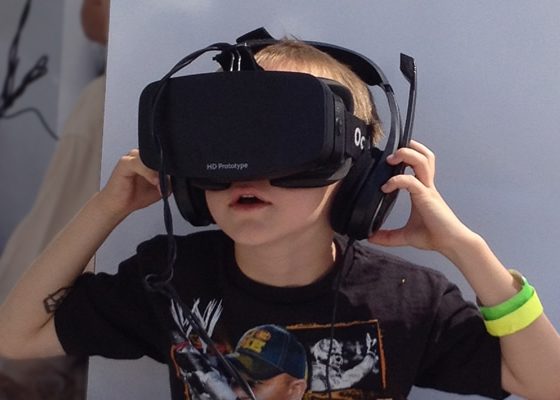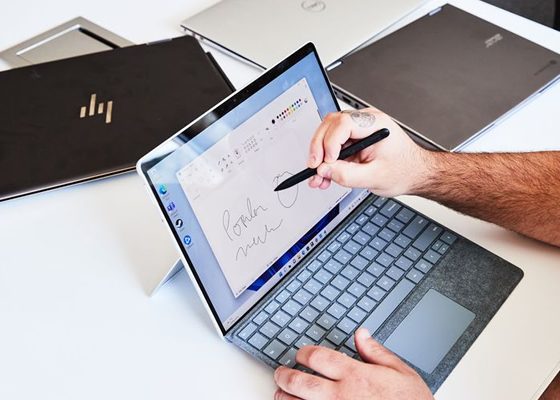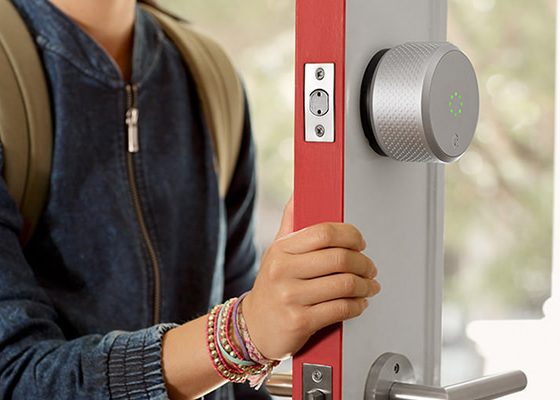In the relentless march of time, we find ourselves amid the Silver Tsunami, an era where aging populations are becoming more prominent than ever before. This demographic shift brings with it unique challenges, and paramount among them is the well-being of our seniors. In this age of technology, wearables are emerging as a pivotal instrument in the quest for graceful aging.
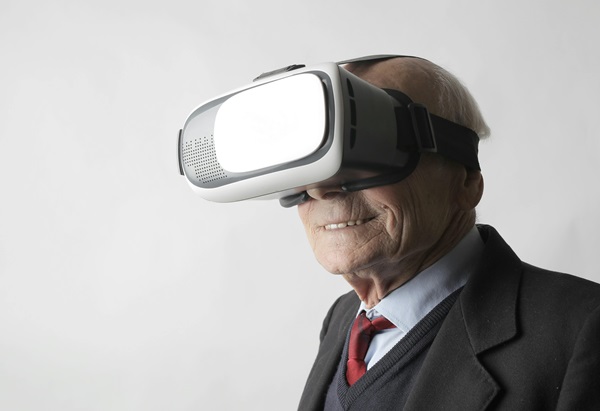
Exploring Wearables for Seniors
The Silver Tsunami
Our world is experiencing a profound demographic transformation. As life expectancies rise and birth rates fall, the elderly population is surging. This “Silver Tsunami” isn’t limited to one region; it’s a global phenomenon. The implications of this shift are vast, touching everything from healthcare to social systems.
The Importance of Seniors’ Well-Being
Maintaining well-being among our elderly is not just a matter of personal comfort; it has societal and economic consequences. A healthy, engaged senior population can contribute significantly to society, while an ailing one can strain healthcare systems and social services.
Role of Wearable Innovations
Enter wearable technology. These innovative devices, ranging from smartwatches to health monitors, are designed to cater to the unique needs of seniors. They promise to enhance various facets of senior life, from physical fitness to emotional well-being.
I. Understanding the Aging Process
Biological Changes
Aging brings a slew of biological transformations. Muscles weaken, bones become more fragile, and vital organs lose some of their efficiency. These changes can lead to chronic health issues.
Psychological Aspects
Seniors may encounter psychological hurdles such as depression or cognitive decline. Cognitive functions can diminish, affecting memory, decision-making, and problem-solving abilities.
Social Impact
The social consequences of aging are equally significant. Seniors often grapple with loneliness and isolation, further compounding their physical and mental challenges.
II. Challenges Faced by Seniors
Health Issues
Chronic Conditions
Seniors frequently contend with chronic conditions like hypertension, diabetes, and heart disease. Managing these conditions is a paramount concern.
Cognitive Decline
Cognitive ailments, such as Alzheimer’s disease, pose a profound challenge. Wearables for seniors can aid in monitoring cognitive health and even stimulating mental faculties.
Mobility Concerns
Reduced mobility is a common issue among seniors. Falls are a primary concern, leading to injuries and hospitalizations.
Social Isolation
Isolation is a silent epidemic among seniors. Limited mobility and decreased social engagement can lead to loneliness, adversely impacting mental health.
Safety and Security
As seniors live alone or with limited assistance, safety becomes a critical concern. Emergency response mechanisms and home security features are vital.
III. The Rise of Wearable Technology
Definition and Types
Wearable for seniors encompasses an array of devices, including smartwatches, fitness trackers, and health monitors. These devices are designed to be worn, seamlessly integrating into daily life.
Adoption Among Seniors
The adoption of wearables for seniors is on the rise. Seniors are recognizing the potential benefits and convenience these devices offer.
IV. Wearables for Physical Well-Being
Fitness Trackers for Seniors
Fitness trackers, equipped with step counters and heart rate monitors, are instrumental in monitoring daily physical activity. They encourage seniors to stay active and lead a healthier lifestyle.
Smartwatches and Medication Reminders
Smartwatches are more than just timekeepers; they can serve as medication reminders, ensuring seniors never miss a dose of essential medication.
Fall Detection and Prevention
One of the most significant risks seniors face is falling. Wearables for seniors with fall detection capabilities can swiftly alert authorities or family members in case of an accident, potentially saving lives.
V. Wearables for Cognitive Well-Being
Memory Aids and Cognitive Games
Wearables can assist seniors with memory aids, such as reminders for appointments and medication. Cognitive games help keep the mind sharp and engaged.
Monitoring Cognitive Health
Wearables can track cognitive health over time, offering insights into potential issues and allowing for timely intervention.
Promoting Mental Stimulation
Mental stimulation through puzzles and brain-teasers on wearable for seniors can help seniors maintain cognitive function and reduce the risk of cognitive decline.
VI. Wearables for Emotional Well-Being
Social Engagement Apps
Loneliness can take a significant toll on senior mental health. Wearables for seniors can include social engagement apps to connect seniors with friends and family.
Tracking Mood and Stress Levels
Some wearables for seniors now can track mood and stress levels. This data can be shared with healthcare providers for a more comprehensive view of a senior’s well-being.
Virtual Support Networks
Wearables for seniors can connect seniors with virtual support networks, providing them with a sense of community and emotional assistance.
VII. Safety and Security Wearables
GPS and Location Tracking
Location tracking features in wearables are a blessing for seniors and their caregivers. They provide peace of mind by ensuring that a senior’s whereabouts are known at all times.
Emergency Response Features
Wearables for seniors can be equipped with emergency buttons that connect seniors to emergency services with a single press. This feature can be a lifesaver in critical situations.
Home Automation Integration
Integrating wearables for seniors with home automation systems allows seniors to control lights, locks, and thermostats, enhancing their safety and comfort.
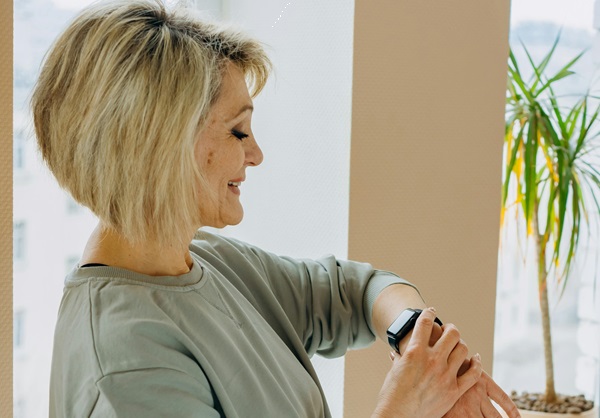
VIII. Wearables for Healthcare Monitoring
Blood Pressure and Heart Rate Monitors
Monitoring vital signs, such as blood pressure and heart rate, can aid in the early detection of health issues.
Continuous Glucose Monitoring
For seniors with diabetes, continuous glucose monitoring via wearables can provide real-time data and alerts, improving diabetes management.
Medication Adherence Solutions
Wearable devices can assist seniors in adhering to medication schedules through timely reminders and tracking capabilities.
IX. User-Friendly Design
Seniors’ Unique Needs
Wearables for seniors consider their unique needs, such as larger displays, intuitive interfaces, and ergonomic designs.
Accessibility Features
Wearables for seniors often incorporate accessibility features, like voice commands and text-to-speech functionality, to ensure seniors can easily navigate the devices.
Comfort and Style
Design isn’t just about functionality; it’s about aesthetics too. Many wearables for seniors come in stylish designs that the elderly can wear with pride.
X. Privacy and Data Security
Protecting Seniors’ Personal Information
Wearable manufacturers must prioritize data security to protect seniors’ personal information, including their health data.
Consent and Data Ownership
Seniors need to understand and consent to the data collected by wearables. They should also be aware of data ownership and sharing practices.
XI. Cost Considerations
Affordability for Seniors
Affordability is a critical factor, as many seniors are on fixed incomes. Solutions need to be cost-effective to be accessible.
Health Insurance Coverage
Exploring health insurance options for wearables can alleviate some of the financial burdens on seniors.
Government Initiatives
Some governments offer support for senior-focused wearable technology, making it more accessible to a broader population.
XII. Success Stories
Real-Life Examples of Seniors Benefiting from Wearables
To truly grasp the impact of wearables on seniors, we delve into real-life stories of seniors whose lives have been transformed through these devices.
Testimonials and Case Studies
Through testimonials and in-depth case studies, we can see the tangible benefits that wearables bring to seniors and their caregivers.
XIII. The Future of Wearable Innovations
Emerging Technologies
What’s on the horizon for wearable technology? We explore emerging technologies and their potential impact on senior well-being.
Potential Developments
As wearables for seniors continue to evolve, we discuss potential developments that could revolutionize the way we care for seniors.
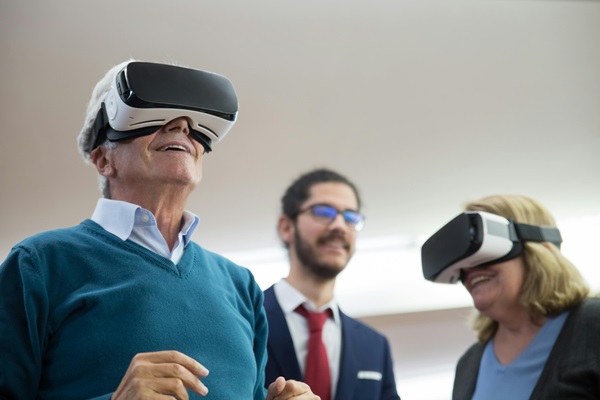
XIV. Recommendations for Seniors
Making Informed Choices
Seniors should be well-informed before choosing a wearable device. They should consider their unique needs and consult with healthcare professionals.
Seeking Professional Guidance
Consulting with healthcare professionals can help seniors select the most suitable wearable device and integrate it into their overall healthcare plan.
Staying Updated on Wearable Tech
The landscape of wearable technology is constantly evolving. Seniors should stay informed about updates and new features in their chosen devices.
XV. The Role of Caregivers and Families
Support and Guidance
Caregivers and family members play a crucial role in assisting seniors in adopting and using wearable technology. Their support and guidance are invaluable.
Managing and Coordinating Wearable Use
Caregivers can help manage and coordinate the use of wearables for seniors, ensuring that the elderly are maximizing the benefits of these devices.
XVI. Challenges and Concerns
Technological Barriers
Overcoming technological barriers, such as resistance to change or difficulties with device setup, is essential for successful wearable adoption among seniors.
Ethical Considerations
Ethical concerns, such as data privacy and consent, must be addressed to ensure that seniors’ rights and well-being are safeguarded.
Technophobia
Technophobia is a common barrier. Seniors may fear technology or find it overwhelming. Patient guidance is essential to alleviate this fear.
XVII. Conclusion
In the journey toward aging gracefully, wearable innovations are emerging as a powerful ally. They offer solutions to the myriad challenges faced by seniors, enhancing their physical, cognitive, and emotional well-being. As we stand on the precipice of a technological revolution, wearables for seniors hold the promise of a brighter and healthier future for our elderly population.
